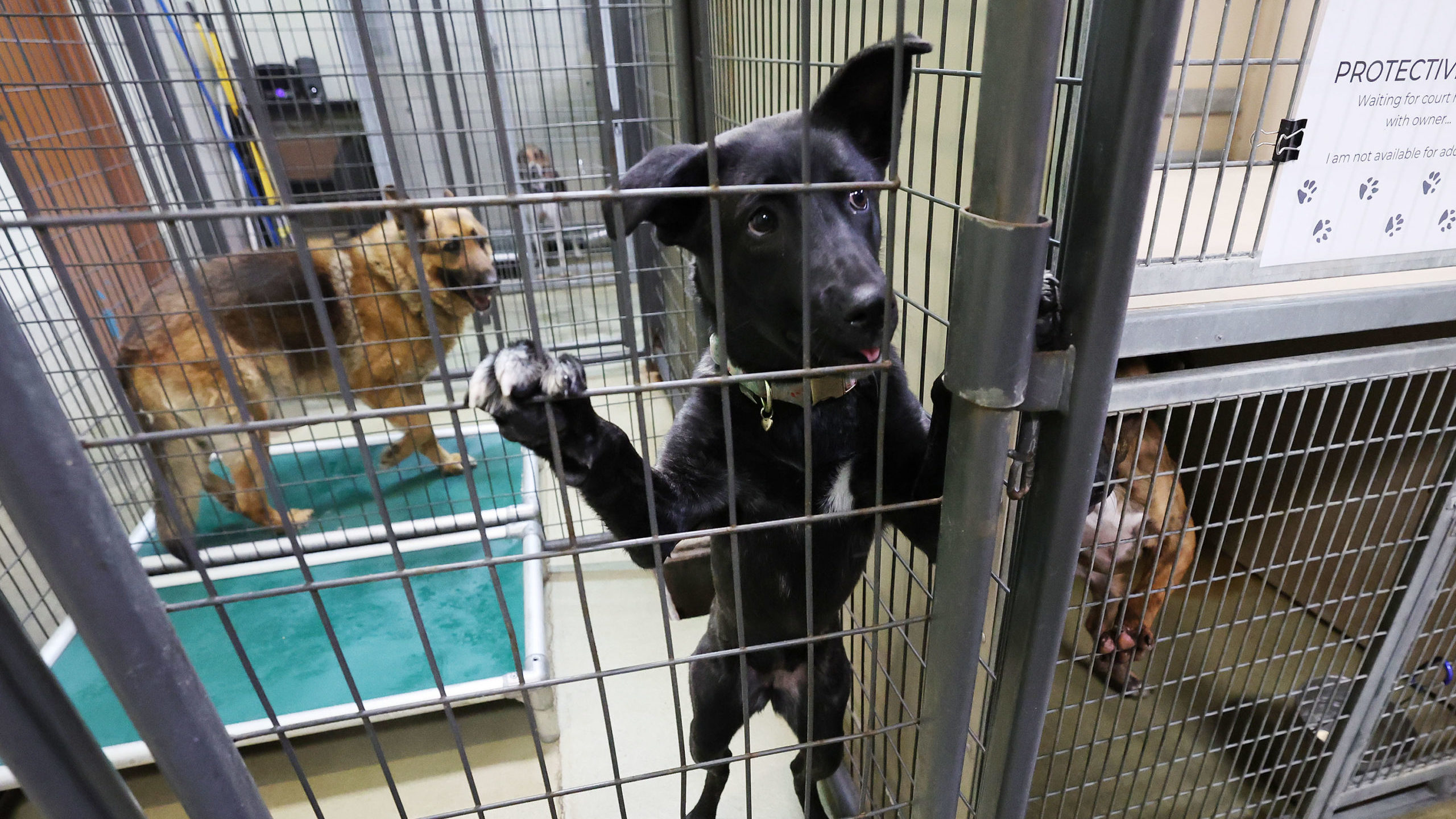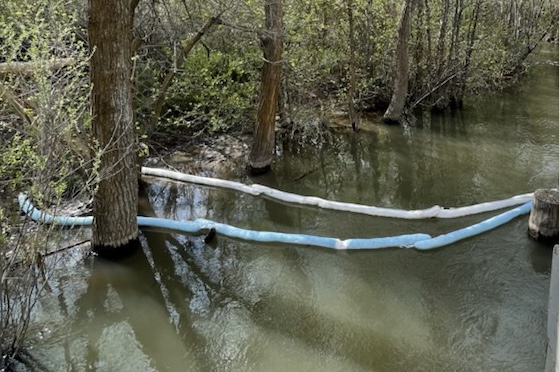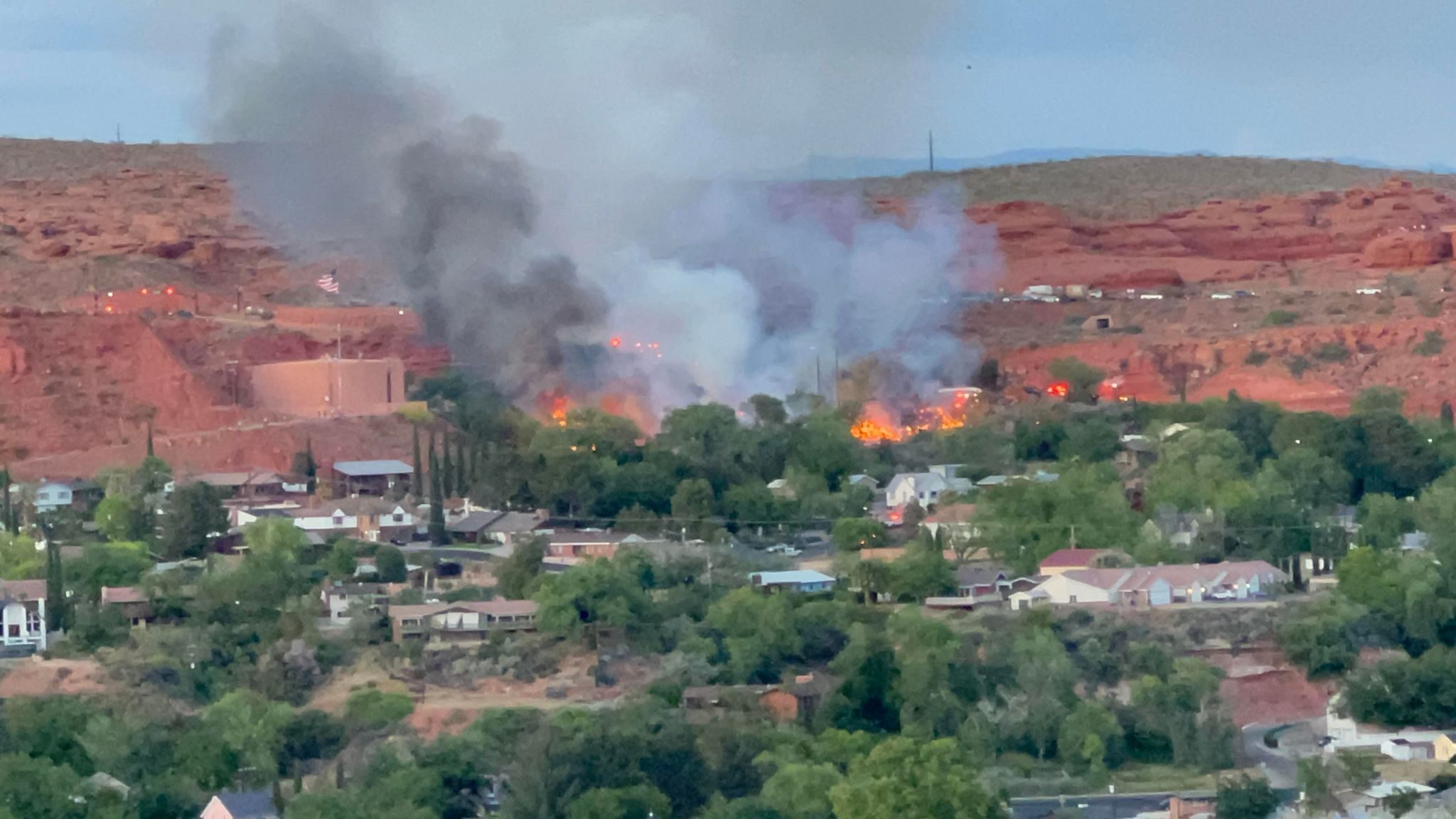Animal shelters inundated, pushing capacity after new year
Jan 9, 2023, 8:00 AM | Updated: Jan 10, 2023, 9:16 am

Dogs are caged at South Salt Lake Animal Services on Tuesday, April 5, 2022. Animal shelters are seeing more pets being dropped off. (Jeffery D. Allred/Deseret News)
(Jeffery D. Allred/Deseret News)
SALT LAKE CITY — For weeks ahead of the new year, animal shelters around Utah and the nation offered reduced adoption fees, fostering perks, and more to try to get some of their shelter animals into new homes.
But after the new year, and pushes for adoption — shelters are teetering on whether they can handle it all.
“This has been a looming crisis, coming for the last year or so,” said Michelle Dosson, the executive director of Best Friends Animal Society. “We’ve been experiencing [this] across the nation — animal shelters and rescues are really in a full-fledged crisis. Many of them across the country are over capacity, and they’re needing to make really difficult decisions about life-saving.”
Shelters do what they can to get animals adopted, but the number of animals coming into shelters has outpaced adoption rates.
“Animals and our pets are an extension of our families — I mean, they are our family,” Dosson said. “To have our shelters be inundated and overrun and beyond the capacity of care for animals… we all need to step in and do our part.”
Back in November, Best Friends of Utah reported they were over capacity for dogs and near capacity for cats. Many shelters across the state have reported similar trends.
“Hopefully they have programs in place that facilitate a quicker outcome for these animals,” Dosson said. “Like enrichment, playgroups, day out activities that all contribute to an animal’s presentability at the shelter and raise their adaptability.”
These proactive programs also offer more visibility to the animals, increasing the potential pool of adoptive families.
How Utah’s climate helps keep more animals out of the shelters
Dosson says the southern part of the United States will always struggle with having animal shelters at capacity because they never experience a true winter.
“In the south, the capacity crisis is pretty much always happening because of the different breeding cycles,” Dosson said. “Because they don’t experience true winters, breeding cycles never really end. The sheer volume of animals is higher across the south.”
Breeding cycles are typical during the warmer months. Gestational periods for cats and dogs are typically just 60-70 days.
“If you don’t really experience the hard freeze or winter that kind of cycle never really ends,” Dosson said.
Dosson says when she worked in Texas, their kitten season was year-round to a degree.
“Much heavier in the spring and summer and through the fall,” she said. “Here in Utah, there’s definitely there’s not a hard stop. It isn’t that there’s not a complete end — because there are always going to be anomalies. But typically right now, we don’t see a lot of kittens coming into our shelter. They’re just not being born.”
“But when you look up into the northeast, everywhere, the Pacific Northwest, through the Great Plains, everybody is really just full.”
Dosson encourages anyone who is interested in helping to volunteer at your local animal shelter.
Reunite over taking to animal shelters
What we think might be a stray animal is most likely a lost pet.
“The good samaritan in all of us immediately wants to remove that animal from that community and take it to the animal shelter, but I would promote trying to reunite pets and their families without involving the shelter,” Dosson said. “If you take, for example, a dog outside or even a cat, really, they’re probably not far from their home.
She finds that social media is one of the easiest ways to reunite pets with their owners.
“You can reunite pets independently under shelter, you can post on social media, on NextDoor,” she said. “If you have a Ring doorbell camera, you can post on their social media.”
There are lost and found pet groups on Facebook all throughout Utah, so Dosson says to make sure to post there, too.
“Remember that when you find a lost animal outside, they really aren’t probably far from their home,” she said.” Hold on to it for a little bit, take it for a walk. If we’re talking about a dog, see where it goes — post on social media, without taking them to the overcapacity already full shelter.”
Kira Hoffelmeyer contributed to this report.













